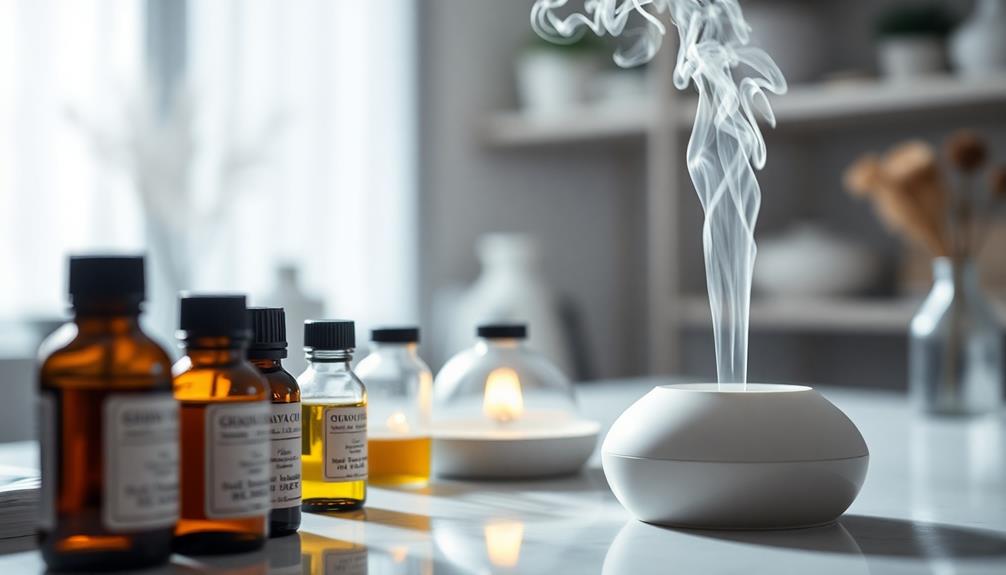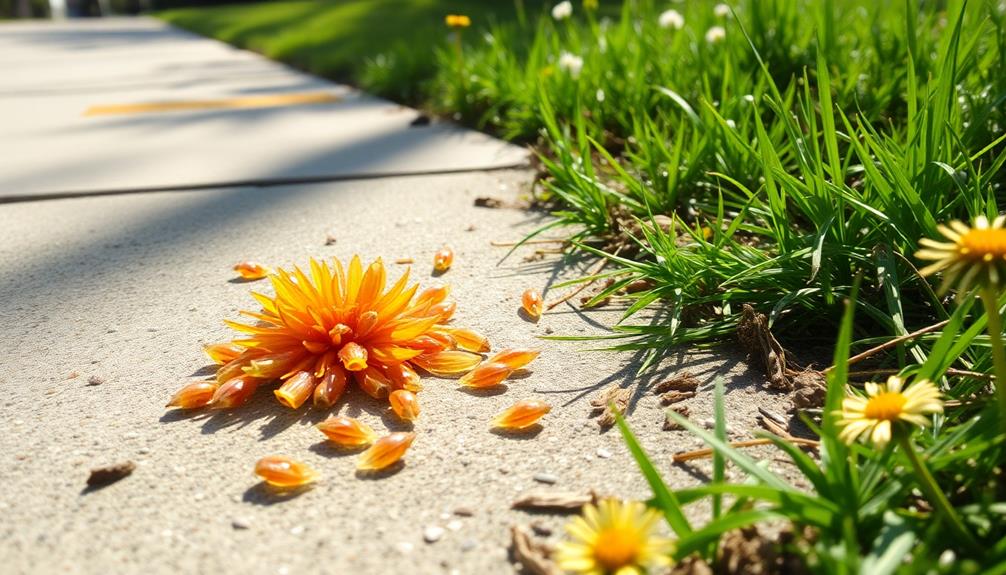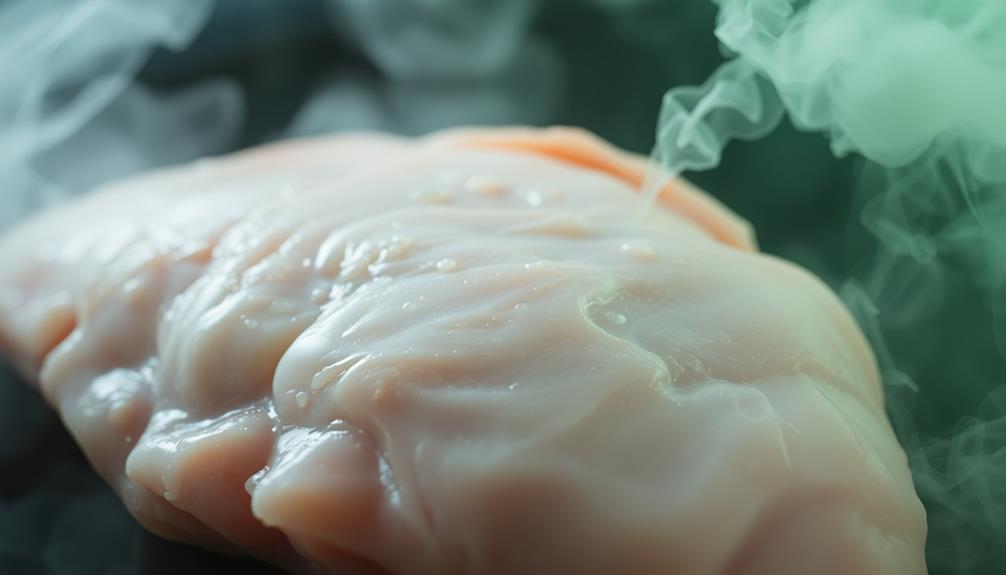When it comes to the smell of arousal, you might notice a unique blend of natural body odors. This scent becomes more intense due to emotions and hormonal changes during intimate moments. It's all about pheromones and sweat, which can signal attraction. Men often find the scent of aroused women more appealing, especially during special occasions like romantic dates. This special smell can create strong feelings and connections. So, if you're curious about how these scents work or what they mean for attraction, you'll discover fascinating insights on this topic soon!
Key Takeaways
- Arousal scent is a unique blend of natural odors influenced by emotional and physiological changes during sexual excitement.
- It consists of pheromones and volatile organic compounds released in sweat, particularly during moments of intimacy.
- Men perceive the scent of sexually aroused women as more intense and attractive compared to non-aroused scents.
- The scent can vary based on hormonal fluctuations, peaking during ovulation when attraction is heightened.
- Cultural perceptions and individual experiences significantly influence how arousal scents are interpreted and appreciated.
Introduction

Understanding the nuances of attraction involves more than just visual cues; scent plays a crucial role too. You might be surprised to learn that a person's smell can influence your feelings of arousal and attractiveness.
Research from the University of Kent reveals that men can actually tell the difference between the scents of women who are sexually aroused and those who aren't. When women watch an erotic film, their body odor becomes more appealing to men!
In this study, scientists collected sweat samples from women during two different activities: watching a documentary and an erotic film. Male participants then rated the intensity and attractiveness of these scents. They clearly preferred the scent from women who were aroused.
This shows that our perception of sexual attraction isn't just about looks; it's also about how we smell.
The findings suggest that biological factors and chemosignals—chemical signals released through body odor—play an important role in the way we perceive attraction.
Description of the Smell

The scent of arousal in women emerges as a complex blend of natural odors significantly altered by emotional and physiological factors. When a woman experiences arousal, her body undergoes hormonal changes that often peak during ovulation. These changes can enhance her natural scent, making it more attractive to others.
During moments of sexual excitement, pheromones are released, creating a unique scent profile. This scent isn't just a mere odor; it acts as a powerful chemosignal. Men can often distinguish between the scents of aroused and non-aroused women, with the aroused scent rated higher in intensity and attractiveness.
This intriguing scent serves as a form of non-verbal communication, signaling sexual desirability.
It's fascinating how your body can convey so much without a single word being spoken! Arousal can create an alluring aroma, drawing attention and sparking interest.
Source and Composition

When women experience arousal, their bodies produce a distinctive scent primarily derived from pheromones and volatile organic compounds released through sweat. This arousal scent varies based on hormonal levels and emotional state.
For example, when you're feeling excited, your body can release special chemical signals that attract others.
One important compound found in arousal scent is androstadienone. This substance has been linked to increased sexual attraction and can even enhance mood.
Studies show that men can tell the difference between the scents of women who are aroused and those who aren't. This suggests that our bodies communicate important information through scent.
These chemical signals play a key role in non-verbal communication. When you're around someone, your arousal scent can influence mate selection, helping potential partners find biological compatibility.
In fact, research involving samples from women's armpit sweat shows that scents collected during erotic stimulation are often rated as more attractive by men.
Typical Scenarios or Environments

Arousal scents often come into play in specific scenarios or environments that heighten emotional and physical responses. You might notice these scents in intimate settings, like romantic dinners or cozy movie nights, where emotions run high.
During these moments, your body goes through physiological changes, such as increased sweat production and hormonal shifts, especially if you're in sync with your menstrual cycle.
In such environments, pheromones are released, creating distinctive aromas that can spark attraction. Interestingly, research shows that men can often tell the difference between the scents of aroused and non-aroused women. The scent of arousal feels more appealing to them.
Additionally, studies suggest that we might be drawn to scents from people with different immune system genes, enhancing the allure of these arousal odors.
When you're in a heightened emotional state, like excitement or nervousness, the scents produced can become even more pronounced. So, whether you're at a party or sharing a quiet moment, these arousal scents can play a significant role in how attraction unfolds.
Embrace these experiences, as they add an exciting layer to human connection!
Emotional or Cultural Associations

Scent plays a powerful role in shaping emotional and cultural associations, influencing how we perceive attraction and intimacy. Your emotional states can affect body odor, especially during moments of arousal. When you're excited, your sweat changes, and this can release pheromones that others pick up on.
However, how these scents are perceived varies greatly across cultures. Recognizing signs of survival mode can help in understanding how your emotional state influences scent perception.
In some places, certain fragrances are linked to attraction and romance. In others, those same scents mightn't carry the same meaning at all. For instance, studies show that men often find the scent of aroused women particularly appealing, linking biological responses with cultural perceptions of scent.
Your individual experiences and personal preferences play significant roles too. What smells good to one person may not be attractive to another, based on their cultural upbringing and past encounters.
Health or Safety Considerations

Understanding the impact of body odor during moments of arousal is crucial for both health and safety. When you experience arousal, your body releases certain scents that can change due to hormonal fluctuations and increased sweat production. These scents, often influenced by pheromones, can play a significant role in attraction.
It's interesting to know that men can often tell the difference between the scent of aroused and non-aroused women. This ability highlights the importance of body odor in sexual attraction.
But there's more! Your immune system genes also come into play. You might be subconsciously drawn to someone whose scent indicates they've a different immune system, which can be a sign of good health.
While these scents can enhance attraction, they also remind us of the need for personal hygiene. Maintaining good health and cleanliness is essential, especially when engaging in social interactions.
Taking care of your body odor can help you feel confident and attractive. So, embrace the science behind arousal scents, but always remember to prioritize your health and safety in the process!
Final Thoughts

The allure of human attraction often hinges on the subtle yet powerful influence of olfactory cues. You mightn't realize it, but the scent of arousal plays a significant role in attraction. Research shows that men can tell the difference between the scents of aroused and non-aroused women, often finding the former more appealing. This suggests that olfactory signals, or chemical signals, are key in our attraction to one another.
These scents can heighten sexual motivation, especially during a woman's ovulation. Imagine that! The natural scents produced during this time might help shape mating preferences and reproductive strategies.
When you think about it, our sense of smell can trigger strong feelings and connections without us even knowing. Understanding these olfactory cues can enhance your awareness of attraction and relationships.
Frequently Asked Questions
Does Female Arousal Have a Smell?
Yes, female arousal does have a smell. Research shows that men can differentiate between scents of aroused and non-aroused women, finding the former more attractive. This connection highlights how body odor influences sexual attraction.
What Is an Arousing Smell?
An arousing smell often includes musky, warm scents that evoke intimacy and desire. You might find that fragrances with notes of vanilla, sandalwood, or jasmine can heighten your senses and create a romantic atmosphere.
What Does Female Release Smell Like?
When considering female release, you'll notice it often carries a musky or slightly sweet scent. This aroma can change throughout her menstrual cycle, influenced by hormonal shifts and individual body chemistry, enhancing attraction.
Can You Smell a Man's Arousal?
You can't directly smell a man's arousal like a specific scent, but research suggests that pheromones and subtle chemical signals might indicate his attraction, influencing your perception and feelings towards him in social situations. These signals are often subconscious, meaning you may not even realize you’re picking up on them, but they could still subtly affect your interactions. Interestingly, this makes it difficult to pinpoint *what guess seductive smells like*, as it’s not about a distinct odor but rather an intricate mix of body chemistry and non-verbal cues. Ultimately, attraction is a complex interplay of sensory information that extends far beyond just sight and sound.









